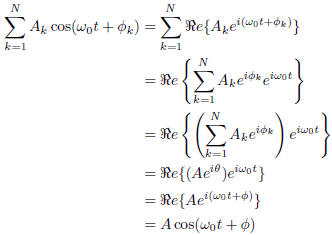- Home
- INTERMEDIATE ALGEBRA
- Course Syllabus for Algebra I
- Mid-Plains Community College
- FRACTION OF A WHOLE NUMBER
- Systems of Linear Equations
- MATH FIELD DAY
- Course Outline for Finite Mathematics
- Calculus
- Algebra Final Examination
- Math 310 Exam #2
- Review of Trigonometric Functions
- Math 118 Practice test
- Precalculus Review
- Section 12
- Literal Equations
- Calculus Term Definitions
- Math 327A Exercise 2
- Public Key Algorithms II
- Maximizing Triangle Area
- Precalculus I Review for Midterm
- REVIEW OF A FIRST COURSE IN LINEAR ALGEBRA
- Math 6310 Homework 5
- Some Proofs of the Existence of Irrational Numbers
- ALGEBRAIC PROPERTIES OF MATRIX OPERATIONS
- Math 142 - Chapter 2 Lecture Notes
- Math 112 syllabus
- Math 371 Problem Set
- Complex Numbers,Complex Functions and Contour Integrals
- APPLICATIONS OF LINEAR EQUATIONS
- Week 4 Math
- Fractions
- Investigating Liner Equations Using Graphing Calculator
- MATH 23 FINAL EXAM REVIEW
- Algebra 1
- PYTHAGOREAN THEOREM AND DISTANCE FORMULA
- Georgia Performance Standards Framework for Mathematics - Grade 6
- Intermediate Algebra
- Introduction to Fractions
- FACTORINGS OF QUADRATIC FUNCTIONS
- Elementary Algebra Syllabus
- Description of Mathematics
- Integration Review Solutions
- College Algebra - Applications
- A Tip Sheet on GREATEST COMMON FACTOR
- Syllabus for Elementary Algebra
- College Algebra II and Analytic Geometry
- Functions
- BASIC MATHEMATICS
- Quadratic Equations
- Language Arts, Math, Science, Social Studies, Char
- Fractions and Decimals
- ON SOLUTIONS OF LINEAR EQUATIONS
- Math 35 Practice Final
- Solving Equations
- Introduction to Symbolic Computation
- Course Syllabus for Math 935
- Fractions
- Fabulous Fractions
- Archimedean Property and Distribution of Q in R
- Algebra for Calculus
- Math112 Practice Test #2
- College Algebra and Trigonometry
- ALGEBRA 1A TASKS
- Description of Mathematics
- Simplifying Expressions
- Imaginary and Complex Numbers
- Building and Teaching a Math Enhancement
- Math Problems
- Algebra of Matrices Systems of Linear Equations
- Survey of Algebra
- Approximation of irrational numbers
- More about Quadratic Functions
- Long Division
- Algebraic Properties of Matrix Operation
- MATH 101 Intermediate Algebra
- Rational Number Project
- Departmental Syllabus for Finite Mathematics
- WRITTEN HOMEWORK ASSIGNMENT
- Description of Mathematics
- Rationalize Denominators
- Math Proficiency Placement Exam
- linear Equations
- Description of Mathematics & Statistics
- Systems of Linear Equations
- Algebraic Thinking
- Study Sheets - Decimals
- An Overview of Babylonian Mathematics
- Mathematics 115 - College Algebra
- Complex Numbers,Complex Functions and Contour Integrals
- Growing Circles
- Algebra II Course Curriculum
- The Natural Logarithmic Function: Integration
- Rational Expressions
- QUANTITATIVE METHODS
- Basic Facts about Rational Funct
- Statistics
- MAT 1033 FINAL WORKSHOP REVIEW
- Measurements Significant figures
- Pre-Calculus 1
- Compositions and Inverses of Functions
WRITTEN HOMEWORK ASSIGNMENT
KEVIN YOKOYAMA
Abstract. Digital signal processing is concerned with processing digital sig-
nals. Digital sound and images are manipulated using the methods of DSP.
1. Complex Numbers
The basic manipulations of complex numbers are reviewed in this section. The
algebraic rules for combining complex numbers are reviewed.
1.1. Introduction. A complex number system is an extension of the real
number
system. Complex numbers are necessary to solve equations such as

The symbol i is introduced to stand for
 , so the previous equation (1.1) has
, so the previous equation (1.1) has
two solutions z =± i . More generally, complex numbers are needed to solve for
the two roots of a quadratic equation

which, according to the quadratic formula, has the two solutions:

1.2. Notation for Complex Numbers. Several
different mathematical nota-
tions can be used to represent complex numbers. The two basic types are polar
form and rectangular form. Converting between them quickly and easily is an
important skill.
1.2.1. Rectangular Form. In rectangular form, the
following notations define the
same complex number z:

The ordered pair (x, y) can be interpreted as a point in
the two-dimensional
plane. A complex number can also be drawn as a vector whose tail is located at
the origin and whose head is at the point (x, y), in which case x is the
horizontal
coordinate of the vector and y the vertical coordinate. The complex number z =
2 +5i is represented by the point (2, 5), which lies in the first quadrant.
Likewise,
z = 4− 3i lies in the fourth quadrant at the location (4, 3).
1.2.2. Polar Form. In polar form, the vector is defined by
its length (r) and its
direction ( θ ). The following descriptive notation is often used:

1.2.3. Conversion: Rectangular and Polar. Both the polar
and rectangular forms
are commonly used to represent complex numbers. Given z = r∠θ , the x
and y
coordinates are given by the following equations

Therefore, a valid formula for z is

Theorem 1.1. The sum of two or more cosine signals
each having the same fre-
quency, but having different amplitudes and phase shifts, can be expressed as a
single equivalent cosine signal
proof

This completes the proof.
1.3. Sound Demo. Run the MATLAB sound demo by
typing xpsound at the
MATLAB prompt. To generate a tone in MATLAB type in the following code:

1.4. Phasor Demo. The process of phasor addition
can be accomplished easily
using MATLAB. The function zprint was used to create the following output.

2. The Mandelbrot Set
2.1. Introduction. The Mandelbrot set is a subset of the parameter plane
for
iteration of the complex quadratic function  .
Here the parameter
.
Here the parameter
c is complex. The Mandelbrot set consists of those c values for which the orbit
of
0 is bounded.


